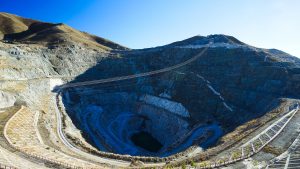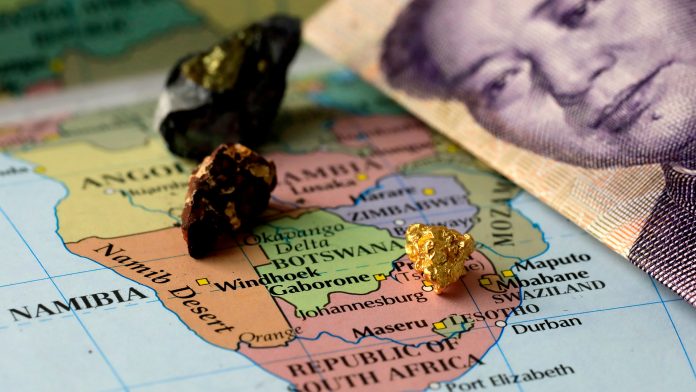Rare earths, a group of seventeen chemically similar elements, play a crucial role in the modern world.
They are integral to several industries, including technology, renewable energy, and defence, owing to their unique magnetic and luminescent properties.
For instance, they are used in manufacturing computer hard drives, electric vehicles (EVs), and wind turbines. Therefore, it is important to understand the current outlook of global rare earths.
The forecasted demand for these elements is expected to rise significantly over the next decade due to technological advancements and an increased focus on green energy solutions. However, this raises several concerns ranging from supply chain issues to environmental impact caused by mining and processing these elements.
Innovation News Network provides an overview of the global rare earths outlook, including production distribution across countries, possible substitutes for these elements in various applications, and the environmental implications of their extraction and processing.
What are the main uses of rare earth elements in important industries today?
In the realm of pivotal industries, particularly the burgeoning technology sector, rare earth elements play an integral role by serving as essential components in computer hardware and electric vehicles, among other applications.
The elemental properties of these materials contribute to their widespread use across various sectors. For example, neodymium is utilised in making high-performance permanent magnets that are crucial for hard disk drives in computers and electric motors in hybrid cars. Similarly, europium’s distinct property of emitting red light when subjected to electrical impulses has facilitated its use in television screens and computer monitors. Furthermore, defence applications heavily rely on rare earths such as yttrium for improving the performance of radar systems and samarium for precision-guided weapons.
Aside from these uses, medical technologies also benefit from the unique properties of certain rare earth elements. Gadolinium is often employed as a contrast agent in magnetic resonance imaging (MRI), while promethium serves as a source of radiation for cancer treatment.
Regarding space exploration, lunar regolith samples brought back by Apollo missions have revealed traces of rare earth elements- indicating their potential utility beyond Earth-bound applications.
Nonetheless, sourcing these invaluable resources presents numerous innovation challenges due to their scattered geographical distribution and complex extraction processes.
Despite this, with ongoing research into alternative mining techniques and recycling methods, strides are being made towards securing sustainable supplies for future tech advancements.
What is the forecasted demand for rare earths in the next ten years?
Projected demand for global rare earths is expected to surge significantly in the next decade, driven by their crucial role in high-tech industries and renewable energy solutions.
As key ingredients in advanced electronics, EVs, wind turbines, and solar panels, rare earth elements are integral to the technology that shapes our modern world. Given this escalating demand, strategic reserves of these elements are being sought globally – a development which greatly impacts trading dynamics and opens up new investment opportunities.
Overall, given the pivotal role played by these valuable resources in various sectors combined with imminent scarcity issues, it becomes evident that sustainable management strategies need to be adopted urgently while also augmenting exploration initiatives to ensure future availability.
Which countries are the largest producers of rare earth elements?
China currently dominates the production of global rare earths, accounting for over 70% of the world’s total output, while Australia and the United States follow behind.

The dominance of China in REE production can be attributed to its less stringent regulations compared to other countries and advanced Element Extraction Techniques that have been perfected over decades. However, this monopoly presents International Trade Impacts that are felt globally, given REEs’ vital role in various industries from technology to defence.
The supply chain challenges associated with REEs mainly lie in their extraction process and distribution due to their geographic dispersion and complex processing requirements. Notwithstanding these challenges, there exist substantial Investment Opportunities for nations willing to venture into this sector as global demand increases.
Each country faces unique challenges which influence not only its capacity but also the global supply chain and trade dynamics surrounding rare earth elements.
What are potential substitutes for rare earth elements in various applications?
Exploring potential alternatives to using rare earth elements in various applications presents a promising avenue for mitigating reliance on these scarce resources. A comprehensive substitute Assessment is crucial to identify viable replacements, considering their availability, cost-effectiveness, and environmental implications.
Innovations in alternatives have resulted in certain materials like cerium oxide being replaced by nanostructured metal alloys or chemical processes that do not require such elements.
Yet another example is the substitution of neodymium magnets commonly used in wind turbines and electric vehicles with ferrite or induction styles which are free from rare earths. However, it’s essential to note that these substitutes often come with their own set of technical limitations and challenges.
Analysing the economic implications of adopting substitutes is equally important as the initial costs involved may be high due to technology development or scaling up production processes. The price volatility of rare earths also adds an additional layer of complexity when evaluating economic feasibility.
In terms of substitute availability, while some alternatives may seem abundant now, projected demands could pose supply risks in the future.
What are the environmental impacts of mining and processing rare earth elements, and are there any policies in place to mitigate these?
Mining and processing of rare earths cast a long shadow on the environment, with its impacts ranging from soil erosion and water contamination to biodiversity loss. Extraction techniques often involve the extensive use of chemicals, which can leach into the surrounding area and negatively affect flora and fauna.
Furthermore, waste management remains a significant challenge due to the toxic nature of rare earths tailings. These environmental hazards pose serious regulatory challenges for governments worldwide that are grappling with balancing economic gains from mining against ecological conservation.

Policies for sustainable mining are being developed at both national and international levels, but enforcement remains inconsistent across regions due to varying local regulations and community impact considerations.
It is, therefore, crucial that all stakeholders – including governments, industry players, and communities affected by mining – engage in meaningful dialogue to establish comprehensive strategies that effectively address these pressing environmental issues while also ensuring the continued supply of global rare earths that are vital for numerous industries.
Please note, this article will also appear in the sixteenth edition of our quarterly publication.









